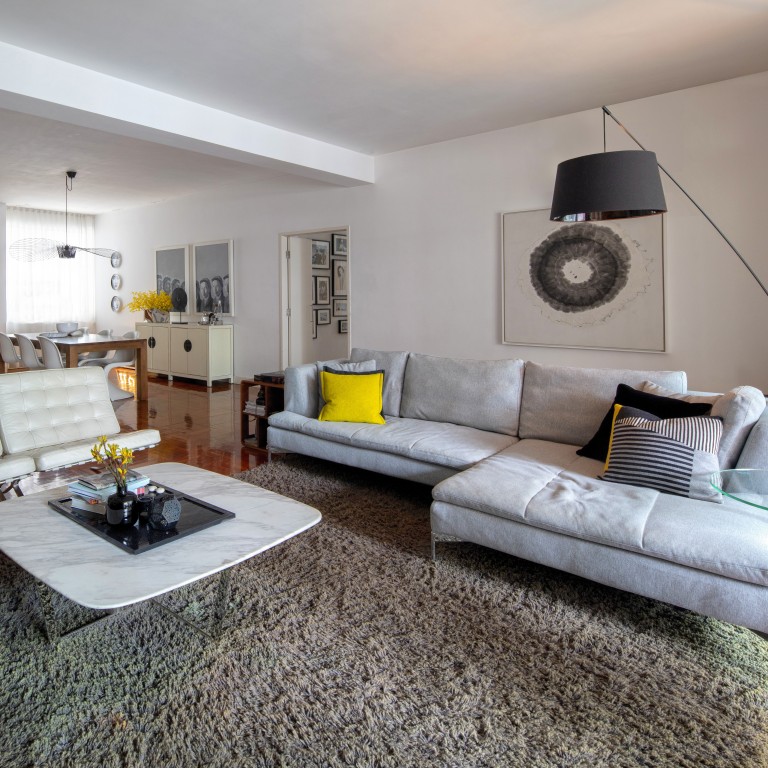
How a couple stamped their own style on a Hong Kong rental
With careful layering and a few simple updates, a couple have turned an ageing Mid-Levels flat into a stylish home full of memories both old and new
Rarely do curtains make for scintillating conversation, but in this home, they rouse unusual passion. Should the fabric puddle at the bottom, are S-folds preferable to pleats, and what else can sheers contribute other than a light, finishing touch?
In this old-style Mid-Levels flat, questions such as these receive prompt, considered responses. For it is the home of New Zealander Greg Farrell, a hotel-design specialist at one of the world’s leading architectural firms, who, with his wife, Australian freelance writer and editor Naomi Healy, turned an unloved, rental property into a welcoming family home. They achieved this by observing tried-and-tested design principles, updating judiciously and furnishing with a lifetime of memories.
“It was a blank canvas that was well organised,” Farrell says, remembering his impressions of the 1960s, 2,800 sq ft, four-bedroom flat upon viewing it in 2012, six years after they moved to Hong Kong. “We used to walk past [the building] and look up at the balconies and say, ‘We want to live in that place.’”
Not quite. Although the large outdoor space attached to the flat had undeniable appeal, Healy wasn’t initially taken by the interiors.
“Greg kept saying, ‘Oh we can make it nice,’ but at the time it was painted cream and all I could see was the mould and hear the noise [exacerbated by empty rooms],” she says.
There was also the matter of the pearlised basin in the shape of an oyster shell, on a pedestal, in one of the bathrooms.
With the landlord’s consent, vanities were replaced in three bathrooms, as were lights in the unit past their groove-by dates. The walls were all painted white, including in the kitchen, a Hong Kong classic with windows opening into an air well. To reduce noise in the bedrooms, doors closing off the hallway were installed. And to cover empty walls, the couple combined gallery pieces with canvas prints, relatively inexpensive stretched vintage fabric, exhibition cards and photographs. “Framing is inexpensive here so there’s no excuse for empty walls,” says Healy.
As is the norm, the flat came together bit by bit, a process different to that of most commercial projects.
“Everybody’s home is always a collection of their lives and that’s what this has become,” Farrell says. “I always say you can build the architectural form but the layering happens over time and is a challenge to get right.”
In this flat, which the couple share with their 15-year-old daughter and 10-year-old son, that effect is carefully managed to make the most of the space.
“People come in and say, ‘You could fit another credenza here, or a side table there, but we don’t like too much,” says Healy.
Farrell continues: “It’s the first apartment we’ve had in which we’ve been able to have nice-sized furniture sitting in the middle of the space – the way you see it in showrooms.”
We’ve always liked clean architectural spaces. I wouldn’t change the plan of this flat – apart from that bathroom – because it’s really efficient
So, instead of couches pushed up against walls, as is common in Hong Kong, their pieces are arranged for conversation.
And for surveying the landscape. Opposite the L-shaped sofa is a sleek console Farrell designed in two parts (for portability and flexibility). Above it is a pair of red-and-white block artworks he painted while living in Sydney, Australia. Diagonally opposite, in the dining room, a “hot” neon sign illuminates Healy’s interest in the art form, underscored by a fulgent heart in the main bedroom, a prototype for a business venture she began with a friend years before neon found renewed favour.
As is typical for tenants who can’t help but mentally redesign their flats, Farrell dreams of a simple alteration that would enlarge their en-suite bathroom. But otherwise, the apartment would remain the same.
“We’ve always liked clean architectural spaces,” he says. “I wouldn’t change the plan of this flat – apart from that bathroom – because it’s really efficient.”
So … curtains? “When we first moved in, the flat felt industrial, but not cool industrial,” says Healy. “It felt too harsh and I said I’d only move in if I could have sheers everywhere.”
As it turns out, the floaty white fabric also hides “a multitude of sins”, including electrical cords, air conditioners and, typical of many rentals, chipped paint and recurring mould.
What about their perfect length?
“These shrank,” says Farrell, lamenting the laundering mishap that has ever so slightly shortened their S-fold sheers, the choice of many designers because of their simple, contemporary look and slim tracks. “It really annoys me because, up until the last wash, they’d been the perfect length.
“They have to just kiss the floor.”

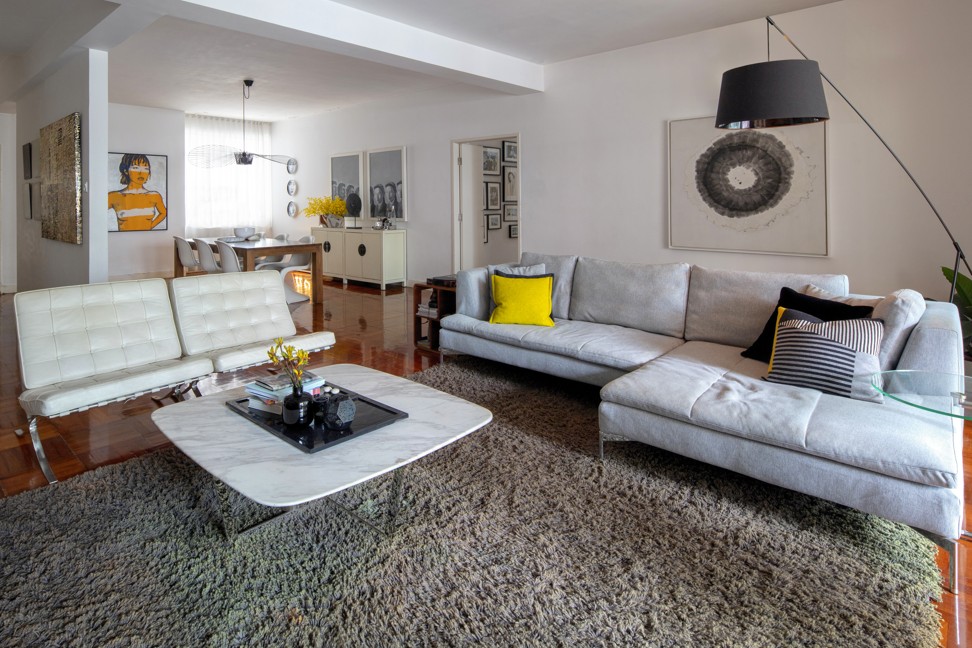
Living area The L-shaped sofa, glass side table and walnut side table came from shops in Hong Kong that have closed. The Barcelona chairs, by Ludwig Mies van der Rohe and Lilly Reich, were bought in Australia a long time ago.
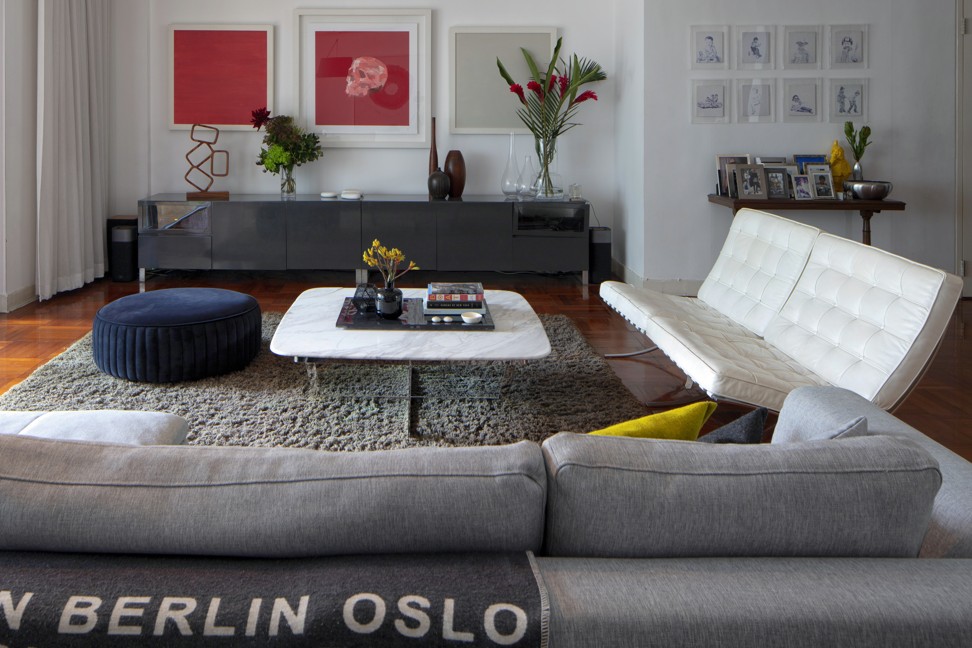
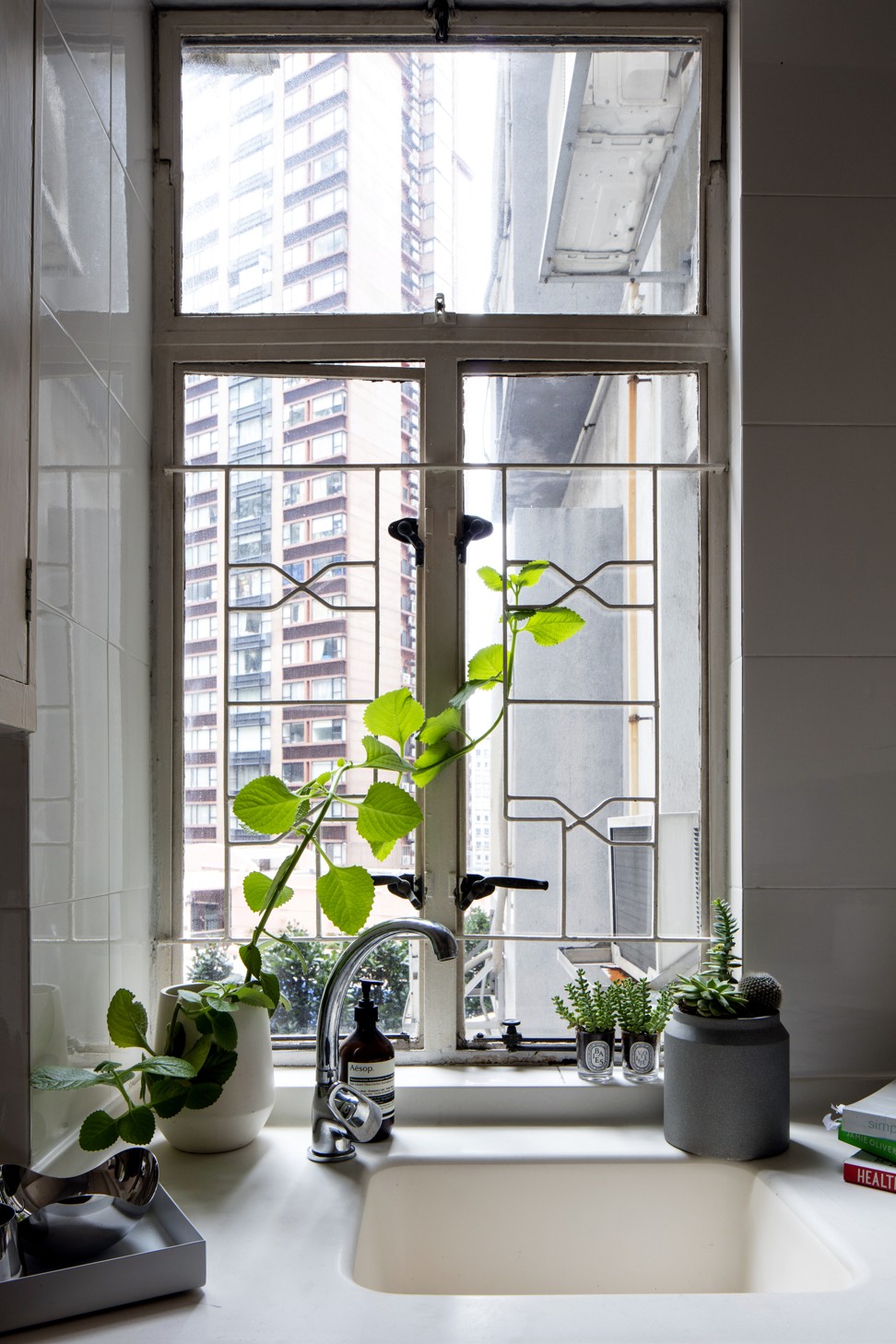

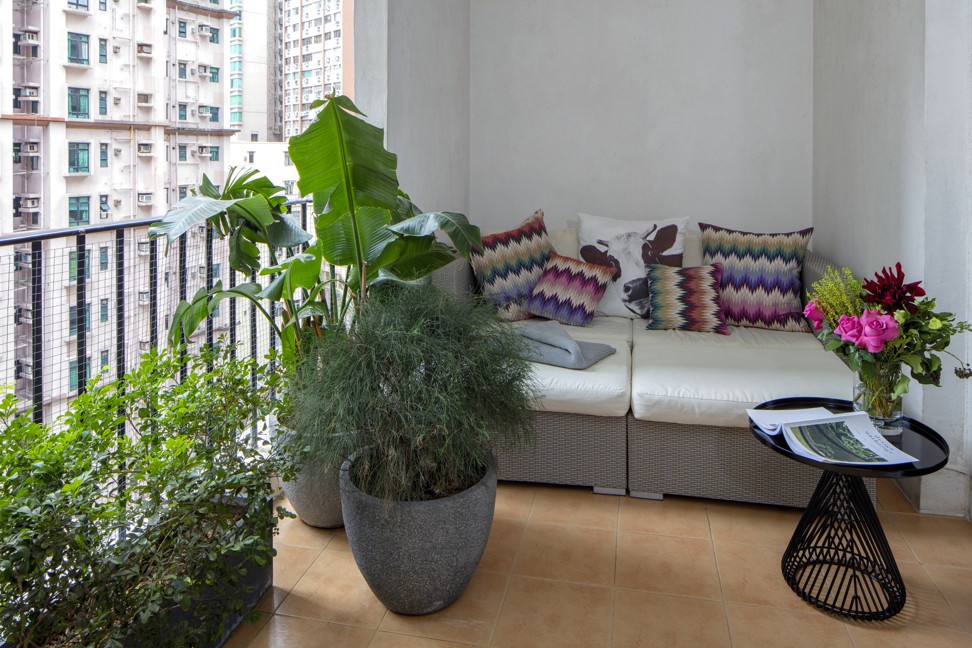
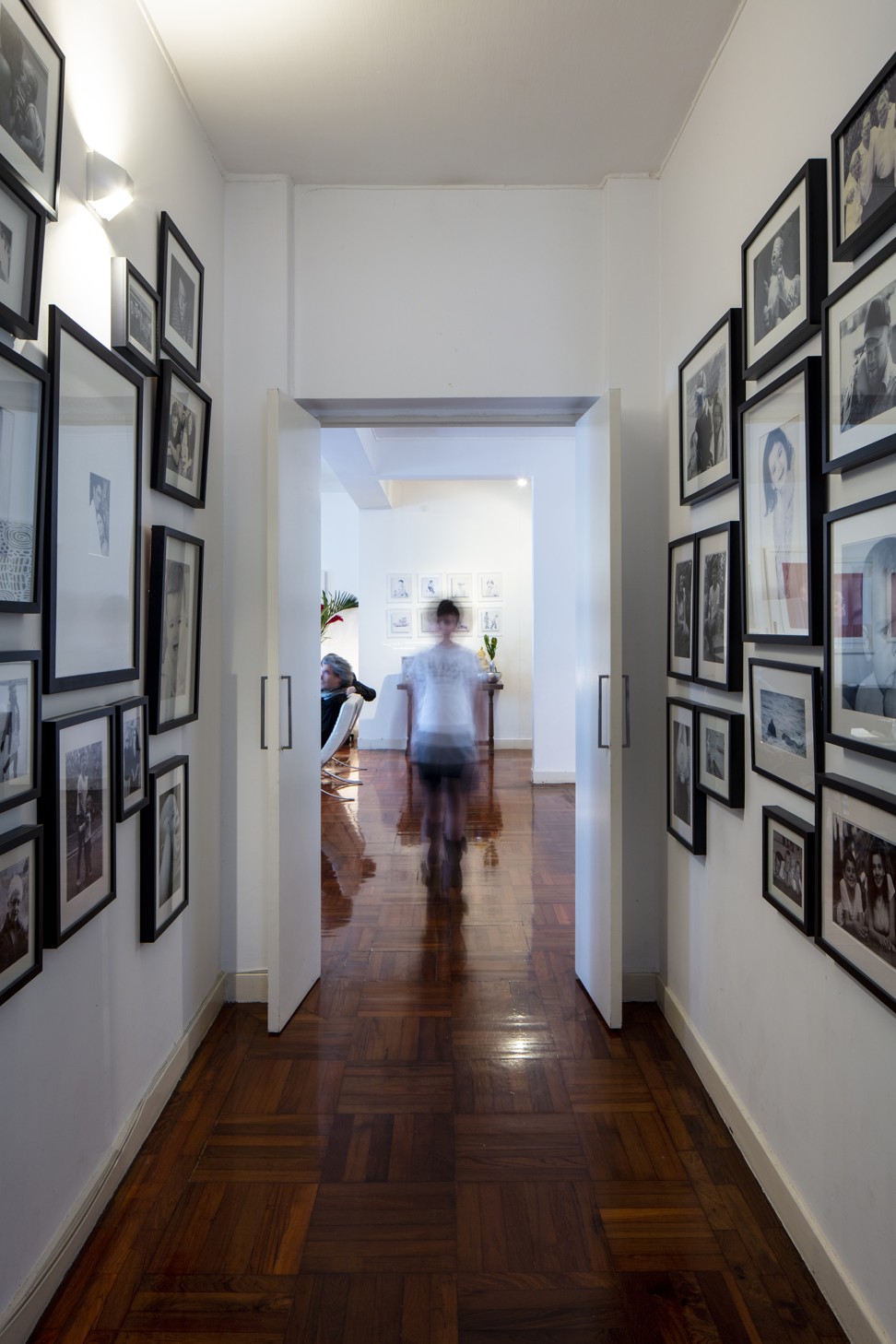
Corridor Black-framed, black-and-white family photographs line the walls of a corridor leading to the bedrooms.

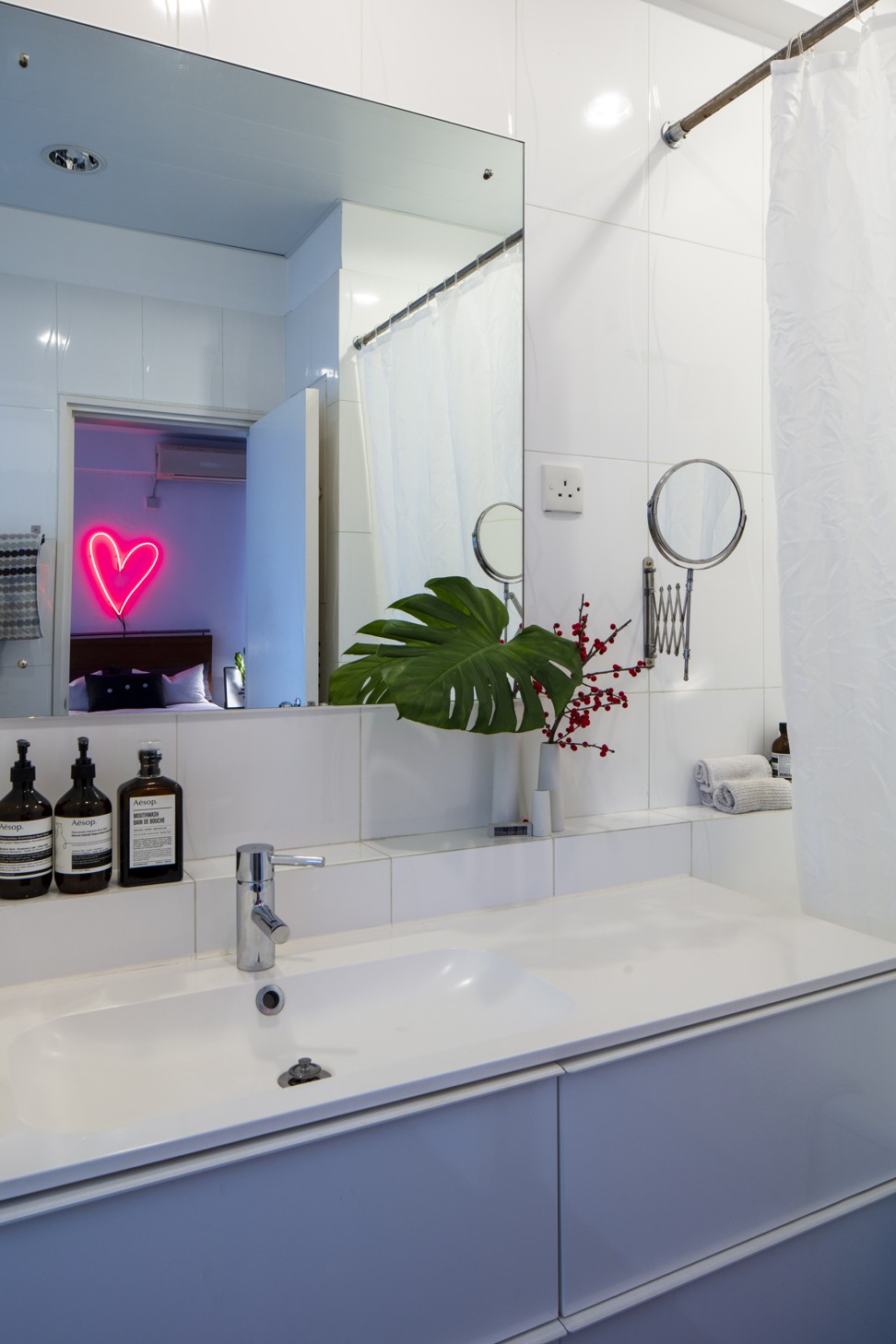
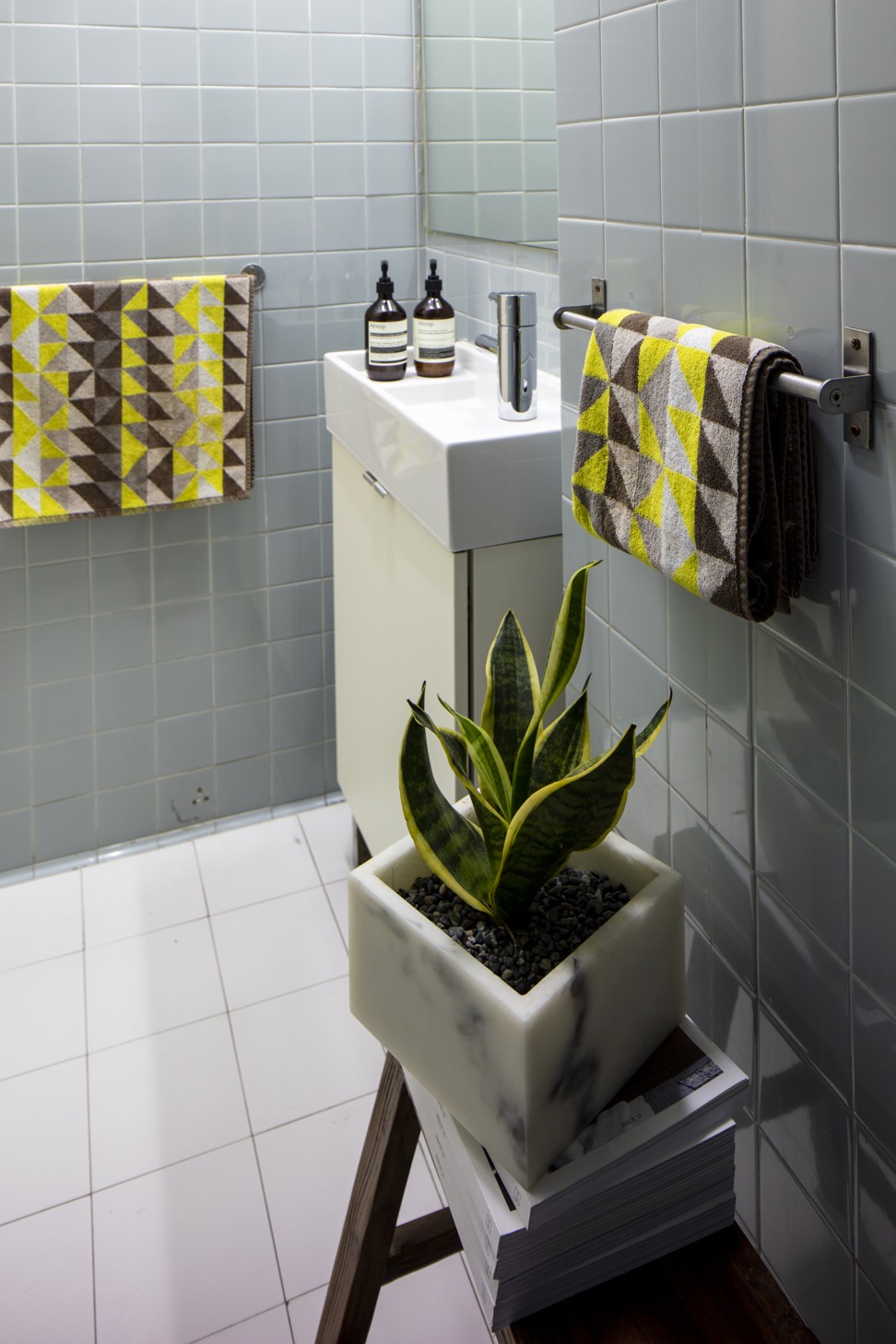
Tried + tested
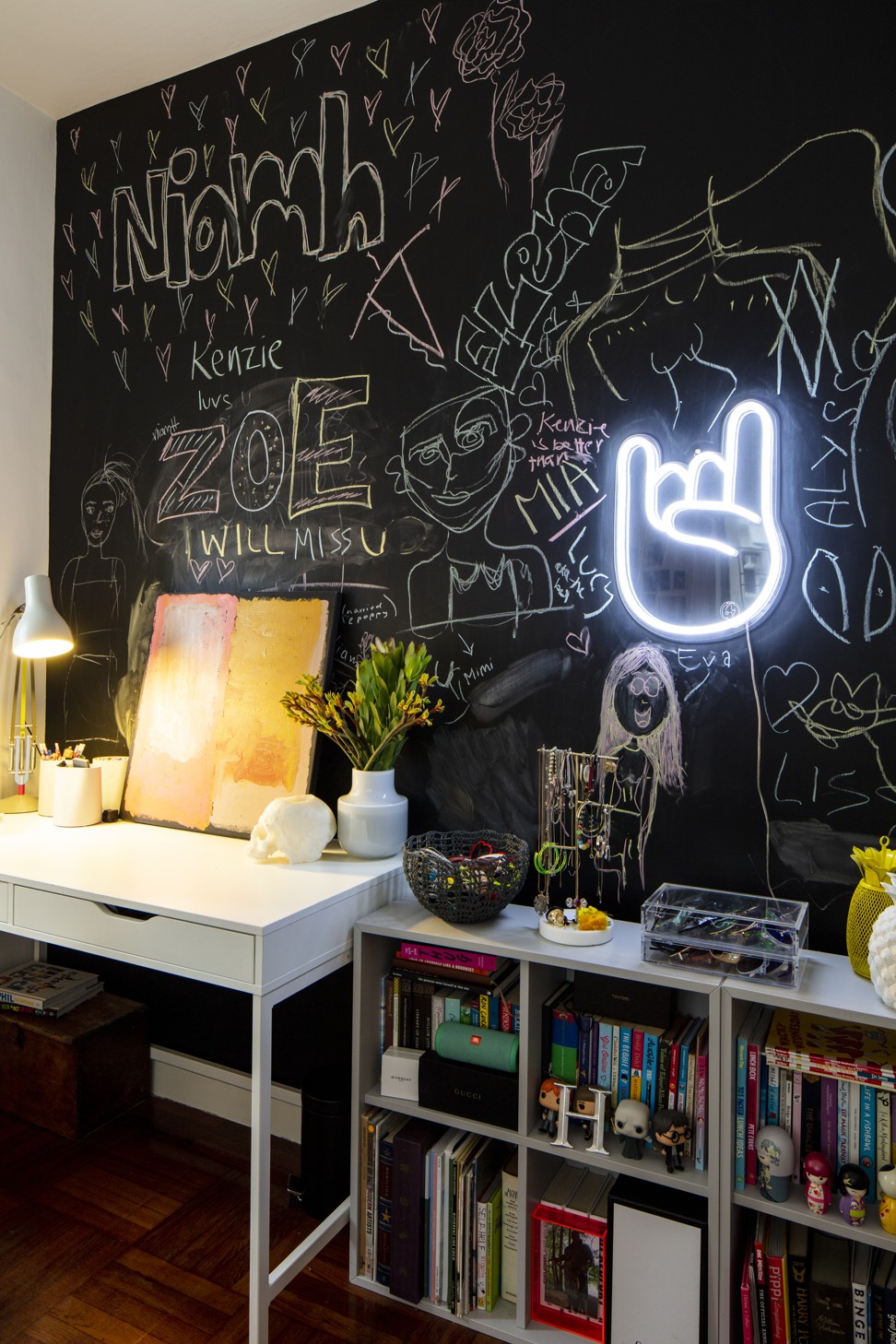
Writing on the wall In teenage daughter Holly’s room, an entire wall was turned into a blackboard for doodles. The 10-square-metre surface required four 500ml cans of blackboard paint (about HK$180 per can from CNT Resene; tel: 2387 7338).

